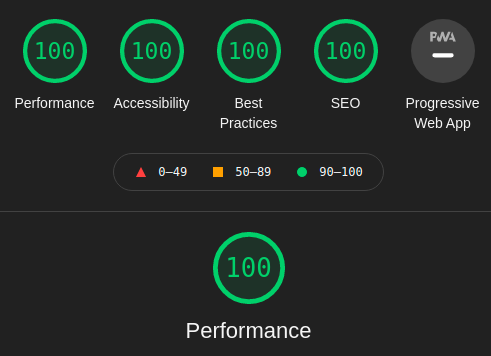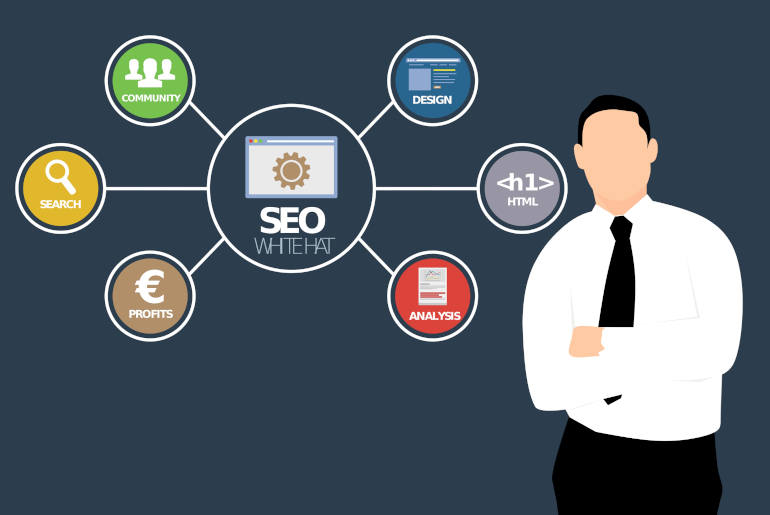SEO, what is it?
SEO (Search Engine Optimization) means in French: "Optimization for search engines".
This term defines all the techniques implemented to improve the position of a website on the search engine results pages (SERP). It is also called natural referencing. The objective of a natural referencing expert is to improve the visibility of the websites he supports by making them gain places on search engines (Google, but also Yahoo!, Bing, etc.). The goal is to bring together Internet users interested in products / services or informative content.
We say that a site is well optimized or referenced if it is in the first position of a search engine on the desired queries.
What are the main criteria in SEO?
In France and generally in the world, the sites most visited by Internet users are those that appear on the very first page of results (among the first 10). Of these first 10 results, the first 3 sites are the most visited.
According to studies, the figures regarding the percentage of clicks on Google search results based on their position on the SERP are as follows:
- 1st position: 33% of computer clicks
- 2nd position : 15.6% of clicks on desktop and the same on mobile
- 3rd position : 10% of clicks on desktop and the same on mobile
The first 3 results therefore represent almost 60% of clicks on search engines. Hence the importance of being well placed in the natural results.
Google rates websites by degree of relevance. The better the ratings, the more they are visible and closer to the 1st page . To be relevant in the eyes of the search engine, several criteria are taken into account.
On-page optimization: textual content of site pages
On-page or on-site optimization is the set of techniques aimed at improving the quality of the content of a site / web page . Several elements are to be perfected from your keyword strategy:
- Title Tag
- Balises Meta (Meta description, robots, keywords)
- Semantic markup (H1-H6)
- URLs
- Page Content (Body)
- Internal linking (internal links)
Off-page optimization: external links (Netlinking)
Conversely, the off-site part represents everything related to the environment of a site, and therefore the links that redirect to a page of this one. It is :
- Source of external links (backlinks from quality sites will be more relevant to Google)
- Link anchor (what term is used to redirect to your site)
The quantity of links is also a factor, but it is much more important to bet on the quality of the links than on their quantity.
User Experience (UX)
This part is the last to have been taken into account by Google. However, for years, we can see that this point is largely to be taken seriously if we want to ensure places in the first search results.
We can distinguish several important criteria for SEO:
- site ergonomics: appearance and quality
- rebound rate
- conversion rate
- user journey
The following elements, if done well, are likely to earn you a lot of space in the results and make you much more visible. Conversely, setting aside the user experience aspect would be a serious mistake. You risk being penalized by search engines, and this more and more, because they will continue to raise their standards in the field. Don't neglect them!
The technical elements related to the site infrastructure (HTML code, domain name, crawl, etc.)
These are all the elements that touch on user experience (UX) . These factors are also essential, in particular to reduce the bounce rate or to improve the conversion rate of a site.
- Weight and page load speed (very important)
- Appearance and quality of the site
- Architecture and tree structure
These different points are essential to address, but they are only the tip of the iceberg. The natural referencing passes indeed by a multitude of actions and by a regularity of the acts. All these operations will improve the image of your site for Google or for a search engine. In any case, natural referencing takes time.
How to optimize your SEO in 2021?
Natural referencing is a constantly evolving sector, which requires constant monitoring to be aware of the latest news and criteria to be applied. Here are some points that will have to be integrated into your digital strategy or monitored in the months to come.
Mobile first
For several years now, the number of searches on mobile devices has exceeded that of searches on desktop. This is why Google and other search engines are adapting and tending to favor so-called “responsive” sites in their SEO algorithms.
Switch to HTTPS
Google has already officially announced it. The hunt for non-HTTPS sites (especially e-commerce) is on. These are and will be banned from the first search results. It is therefore better to take the lead and migrate to HTTPS as quickly as possible.
Local SEO
More and more, we see local geolocated results appearing in the SERPs
Voice search
“Hey Google! This sentence shows the whole understanding of what voice search is today. In terms of SEO too, practices are changing rapidly in this direction. Searches are becoming more and more natural. We focus less and less on keywords and more and more on the semantic aspect and on questions in the form of whole sentences.
Video SEO
Social networks, streaming platforms, live, … We see it every day, visual content is much more represented and impacting in our current information system. This is why producing, optimizing and integrating videos into your content can only be beneficial for you.
SXO
After SEO, make way for SXO. In any case, it is the term already used by certain natural referencing experts who see SEO as an aging term, which will no longer be used in a few years. For them, the number 1 criterion will soon be the user experience (UX). Hence the term SXO (Search eXperience Optimization).
SERP: What criteria should be used in SEO?
The SERPs analyze the sites with algorithms that identify several hundred different criteria. These criteria vary from year to year and these algorithms are more and more precise and worked. They filter the sites according to their nature and the type of request to which they respond. Thus, there are filters corresponding to a geo-localized, image, current, musical, etc. request. In order to better meet these thematic criteria, SEO is also available in video SEO, image SEO, news SEO, etc.
The sites naturally present on the results of the SERPs are visible thanks to their notoriety, their neat work and their popularity. They are not the result of a payment to Google or other SERPs unlike paid referencing (SEA Search Engine Advertising). SEO is long and tedious work while SEA is quick but temporary. An advertising campaign composed of SEA and SEO is called SEM (Search Engine Marketing). We therefore obtain the following equation: SEO + SEA = SEM
How to apply good practices in natural referencing?
Ideally, an SEO strategy should be incorporated into each site creation so that the latter can be directly designed according to the criteria of the SERPs. If this is not the case, an SEO audit is necessary in order to take stock of what has been put in place previously before resorting to modifications/optimizations.
SEO jobs must therefore be creative, versatile and innovative. The "good ideas" and the tests prior to the implementation of new strategies are essential to maintain their place for websites or to make them win new ones in the long term.
In conclusion, mastering the tools of natural referencing requires both significant technical and marketing knowledge. It is essential for a professional to keep informed of developments and trends on the web in order to react in the event of a change or the launch of a new algorithm.
Web merchants with large e-commerce sites have teams responsible for SEO who very often work with the DSIN (Director of Information Systems and Digital). They can also outsource their SEO to private SEO agencies or work with specialized experts. Either way, the qualifications and motivations of SEOs should remain the same.






